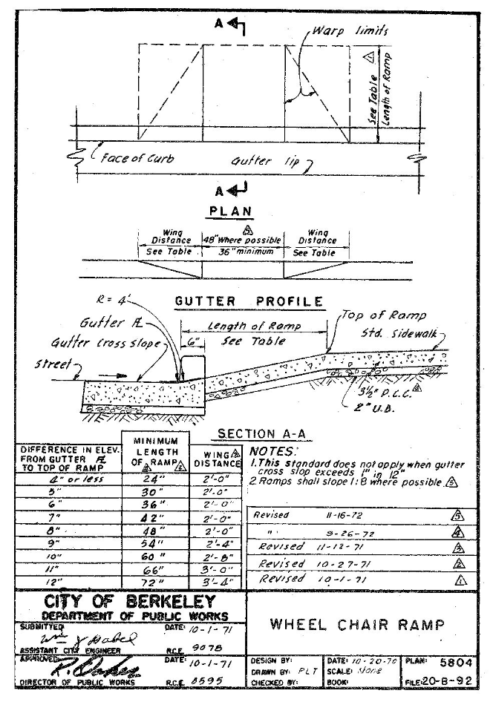Between 1971 and 1972, Hale Zukas and six to eight folks at the newly established CIL began working on programs to assist the scores of non-students in the community coming to PDSP for support.
Hale and others also worked diligently to pressure the City of Berkeley to install curb ramps to make sidewalks more accessible for people in wheelchairs. In 1971, they approached the city council with a request for fifteen more curb ramps. A year later, they lobbied the city to pass a resolution that would add 125 more curb ramps in Berkeley and allocate $30,000 a year for new curb ramp installations.
By the time he lobbied the city for new curb ramp installations, Hale had already spent a significant amount of time creating the specs for a ramp prototype using duct tape and plywood. Eventually the city signed on to adopt his design.
On a design level, Hale’s curb ramp allowed for a smooth landing for people in wheelchairs and for those traveling with a stroller or luggage; it specified that the transition between gutter and ramp be a four-foot radius curve. These curb ramps were placed outside of the crosswalk to enable people with low vision to detect their proximity to the street, while disrupting wheelchair users ability to continue in a direct path.
Remarkably, the city employed Hale’s designs for ten years, in the interval before any state or national accessibility standards were in place.
